- Author Jason Gerald [email protected].
- Public 2023-12-16 10:50.
- Last modified 2025-01-23 12:04.
Ornamental plants can beautify and freshen the air in the room. To keep ornamental plants looking beautiful, trim them regularly with sharp scissors or gardening shears. Start by removing dead leaves, branches, and flowers. Then, cut branches and stems that grow irregularly. You also have to take care of the plant by giving it fertilizer and watering it regularly to keep it healthy and beautiful.
Step
Part 1 of 3: Removing Dead Leaves, Branches, and Flowers
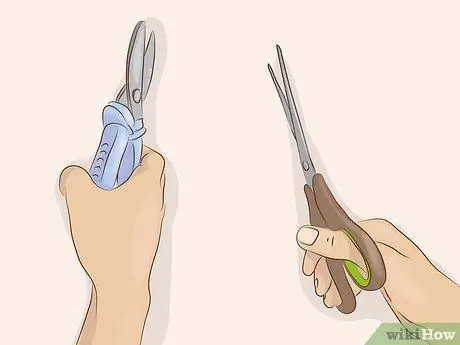
Step 1. Use sharp scissors or gardening shears
Make sure the shears or gardening shears you use are very sharp as blunt cutters can damage the plant. If you see dirt on the scissors, soak the scissors in water that has been mixed with a teaspoon of bleach, then wipe dry. Clean tools will ensure that your houseplants are not exposed to bacteria or pests when you prune them.
- You can buy gardening shears for pruning plants online or at gardening supply stores.
- If you're afraid you'll scratch your hands, use special gardening gloves to protect your hands.
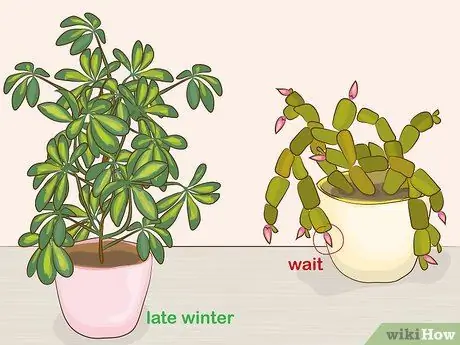
Step 2. Prune the plant early in the growing season
If your houseplant has no flowers, prune it in late winter. For plants that have flowers or flower buds, wait until they bloom before pruning.
Do not prune the plant while there are still buds on the stems
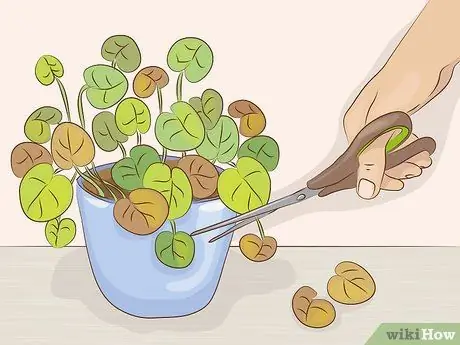
Step 3. Cut dead leaves and branches at a 45 degree angle
Look for leaves or branches that are brown or faded in color. The dead leaves or branches you're looking for may also look shriveled or dry. Use gardening shears to cut just below the brown or dead part at a 45-degree angle. This will ensure that you leave as much of the plant healthy as possible.
- Do not cut leaves or branches that look fresh and green.
- If most of the leafy parts appear dead, you can cut off the entire branch. Leave the main trunk and remove branches that emerge from the trunk at a 45-degree angle.
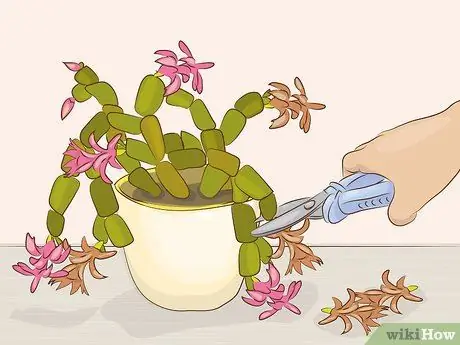
Step 4. Cut off the dead flowers
If your houseplant has flowers, be sure to check for any dead flowers as well, then discard them. Dead flowers may appear brown, faded, and wilted. It may also feel dry to the touch. Cut the dead flowers with scissors at the base of the flower crown.
Pruning dead and wilted flowers can encourage the growth of new, brighter flowers
Part 2 of 3: Pruning Irregularly Growing Branches and Stems
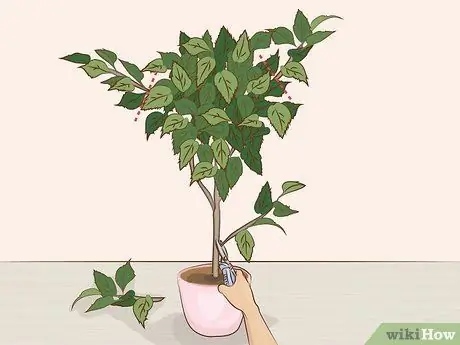
Step 1. Prune in half the longest branch of the plant
Use gardening shears to cut it to about a third of its length. Cut at a 45 degree angle.
- If there are shoots on the stems at the bottom near the base of the plant, you can also cut off some of these shoots.
- Do not cut nodes, buds that have not yet bloomed or opened, on the plants you are pruning.
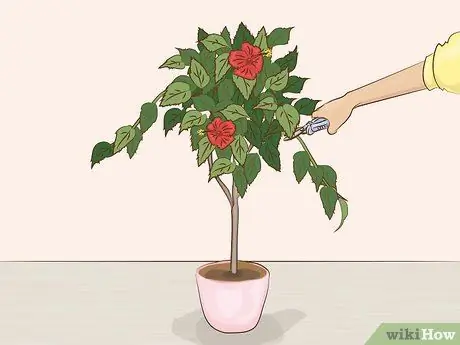
Step 2. Remove stems that are too long
Check if any of the stems are too long. Stems like this may appear loose or hanging, and stick out in various parts of the plant. Cutting stems that are too long like this will help the plant grow in a fuller, more even pattern. Use gardening shears to cut a third of the length of the stem like this at a 45-degree cutting angle.
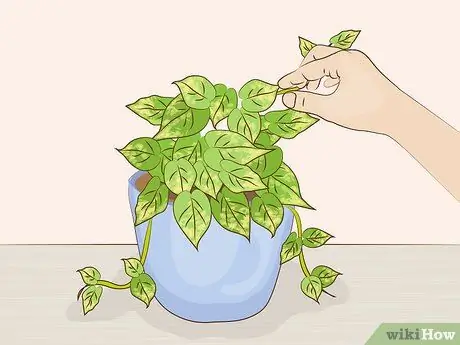
Step 3. Pick the stem
If houseplants have soft stems such as coleus, heartleaf philodendron, and English ivy, make sure you pick the stems regularly. Pluck with your thumb and forefinger to remove the stem ends. Pluck just above the node, which is the growing point where the leaf attaches to the plant.
Plucking the stems can help maintain the leafy shape of the plant and promote more even growth. This step can also help prevent the growth of stems that are too long
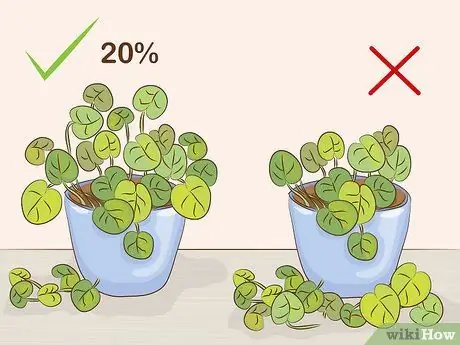
Step 4. Remove 10-20% foliage at a time
Do not prune too much as this can make it difficult for the plant to grow properly. Cut carefully by removing only 10-20% of the foliage at a time. Wait a few weeks to a month to prune them again.
Always leave plant leaves when pruning them. When in doubt, trim it a bit first, then reevaluate a few weeks later
Part 3 of 3: Caring for Houseplants
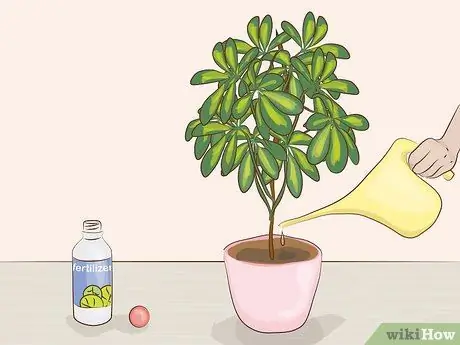
Step 1. Fertilize after pruning
Use an all-purpose, soluble fertilizer for the plant after pruning it. Dissolve the fertilizer so it doesn't burn the plant. Apply fertilizer according to the directions on the package.
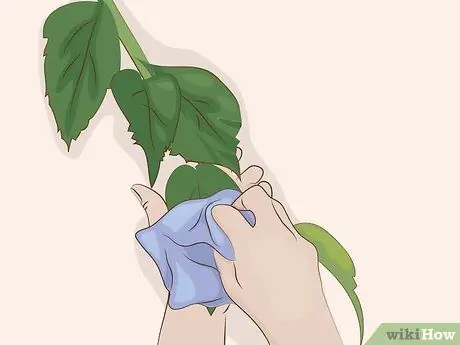
Step 2. Wipe any dust or dirt off the leaves
Ornamental plants with large leaves can be a place to accumulate dust and dirt. Treat houseplants with a damp sponge or cloth to remove dust and dirt. Do it regularly so that the plants always look beautiful.
Always use a new sponge or cloth on different plants to prevent pests from passing from one plant to another
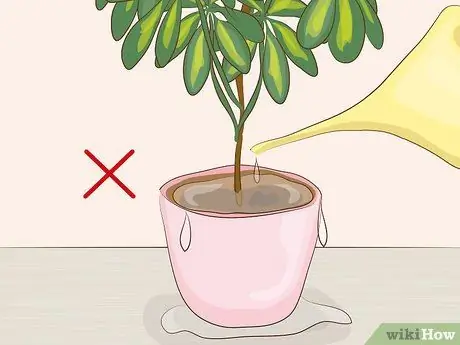
Step 3. Don't water it too much
An important part of caring for houseplants is watering them when needed. Small, delicate houseplants will need more water than succulents. Check if the plant needs water by sticking your finger 2 cm deep into the soil. If the soil doesn't feel moist, the plant needs watering.






